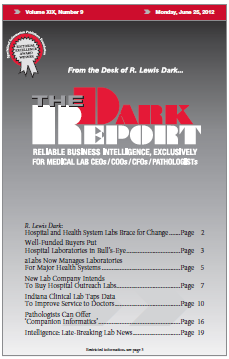CEO SUMMARY: Business intelligence is on the verge of becoming the next “big thing” in clinical laboratory management. Lab teams are using real-time data dashboards to quickly identify problems and take proactive steps to raise service levels to clients. South Bend Medical Foundation says these software systems and related tools are helping it raise the […]
To access this post, you must purchase The Dark Report.


